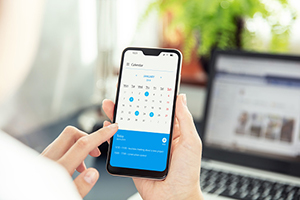Telephone outreach coupled with scheduling assistance significantly increased screening mammography setup and follow-through in a population characterized by low rates of screening mammography and high rates of advanced breast cancer at diagnosis. These are findings from a new study conducted by Nanda et al at five primary care urban safety-net hospital clinics at the University of Missouri, Kansas City, included as part of the American Society of Breast Surgeons (ASBrS) 2020 Scientific Session (Abstract 787690).

Photo credit: Getty
“Recent controversy about current mammography guidelines designed to combat overdiagnosis and overtreatment may be obscuring the reality within pockets of the most vulnerable patients who are rarely getting screened,” commented primary study author Nasim Ahmadiyeh, MD, of the University of Missouri, Kansas City, School of Medicine. “These patients are being diagnosed at later stages, and we have ample evidence that the result is more aggressive treatments and worse long-term survival.”
Need for Improved Screening Uptake
Concerned that its patient population presented with three times as many stage III and IV breast cancers as other Commission on Cancer hospitals, the Kansas City safety-net hospital analyzed the sociodemographic and biologic factors associated with late stage at diagnosis among these women. Failure to undergo mammographic screening within 2 years of diagnosis was the most significant factor. In fact, the safety-net hospital noted that only 42% of its patients aged 50 or older undergo regular biennial screening.
“We wanted to determine whether a two-part intervention as simple as a telephone reminder and offer to schedule the mammogram would boost screening among women who were due for biennial screening mammograms,” said Dr. Ahmadiyeh.
Methods
The study involved 890 women aged 50 to 65 who were due for a mammogram and were seen at one of the five primary care clinics within 3 years of the study, but who had not had a mammogram during the prior 2 years. After being randomly assigned to two groups, the intervention group was contacted by telephone up to three times until reached to remind them they were due for a mammogram and to offer assistance in scheduling.
The study successfully reached 82.8% of the intervention group (a telephone message counted as a contact). Of those reached, 32.9% set up appointments and 47.1% of scheduled exams were completed.
Effects of the Intervention
The study found that 17% of the women successfully contacted underwent screening within 3 months from the contact date, compared to 6% in the control group who received the usual care consisting of reminder letters and physician prompting at visits. Significantly, a secondary analysis revealed that the increase in mammography was almost entirely attributable to the women whose exams were scheduled for them. A reminder telephone call alone had no impact on the likelihood of mammogram completion.
“We were frankly surprised and extremely encouraged that such a simple intervention requiring minimal resources could boost mammogram rates to such an extent,” said Dr. Ahmadiyeh. “Understanding that the scheduling component drove the success of the intervention is key, because we now can focus our resources most effectively going forward. Phone calls and letters are not enough. Scheduling must be simplified for our already overburdened patients. We hope this finding might be relevant to other safety-net hospitals as well.”
Even with this significant exam uptick, however, the clinics studied still lagged well behind the national average for mammographic exam uptake rate of 73% and goals such as the Healthy People 2020 target of 81%.
“As a next step, we want to engage with our patients so that they can help us boost this rate. It may be tempting to attribute the low screening exam rate to factors such as stress and economics, but we do not want to project our own explanation onto this population. We want to draw on the knowledge, strengths, and capacities of our patients and their communities and truly partner with them in our next phase of research,” concluded Dr. Ahmadiyeh.

